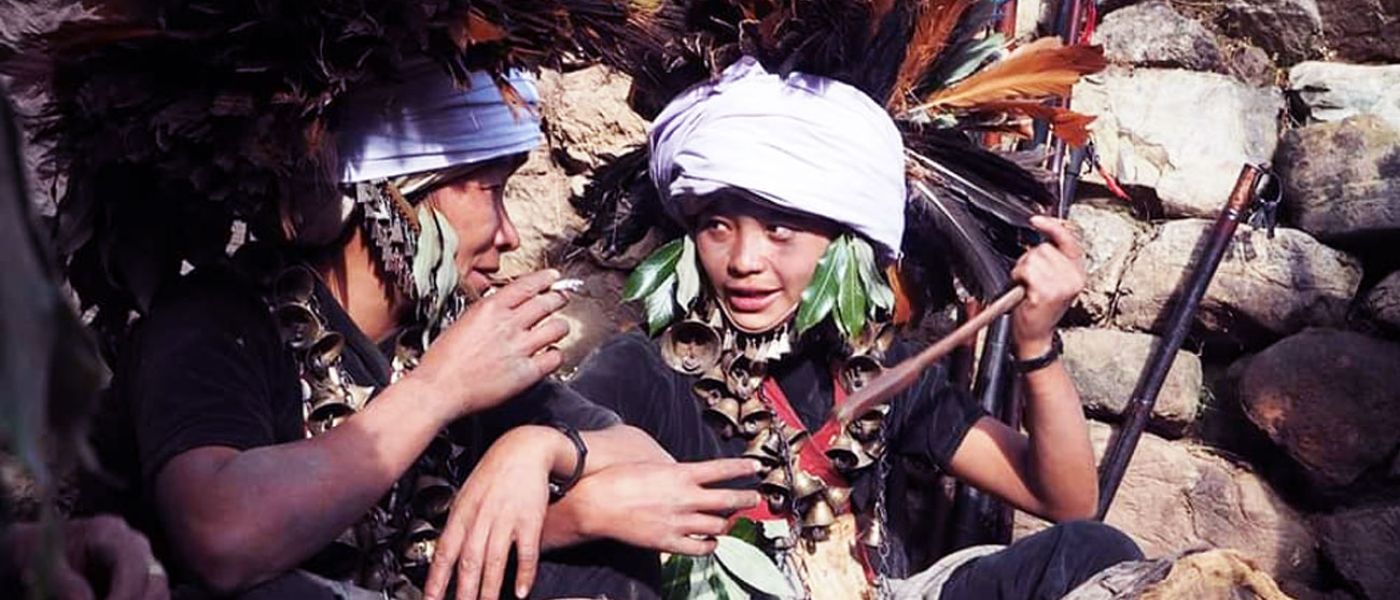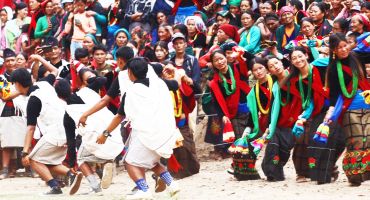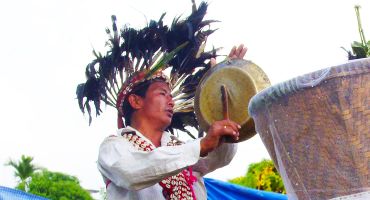For centuries, members of the ancient Kham Magar tribe were left behind and largely forgotten, shielded from the outside world by the towering hills of the north-west Himalayan foothills of Rukum and Rolpa. The community, with a small population of about 40,000 people today, was able to preserve their unique language, religion, and lifestyle and subsequently, their distinctive identity. They also inhabit the upper tributaries of the Sano Bheri, Bari Gad, and Mari Khola on the southwestern flank of the Dhaulagiri massif. The Kham-speaking Magar, though being from the Magar tribe, try to distinguish themselves from the Magars to the east of Rolpa.

The idea of a pristine self-sufficient location is central to the Kham Magar ideology, where the community, formed out of local lineages, lives as an exogamous unit. Kham Magars are divided into four northern Magar sub-tribes. Pun, Roka, Gharti, and Buda. In some places, there is also a sub-tribe (thar) called Jhakri. These Thars are further subdivided into named localized lineages, each of which has a common mythical ancestor or a commonplace of origin.
These localized lineages, rather than the thars, form the branches that control the system of kinship, inheritance, and marriages among the Magars. Marriages, then, are permitted within a thar but not within a localized lineage group. Because of the preference to marry within the local area, most of the lineages have Maiti and Bhanja relationships with all other lineages with the community.
While their Magar brethren, who live to the eastern hills of Gulmi and Palpa have succumbed to the influences of Hinduism and speak the Magar Dhut language, the Kham Magars have a very strong Shamanic tradition and speak the “Kham Dhut” language which is a distinct unintelligible Tibeto-Burman language. This language has no relation to the Kham dialect of the Tibetans spoken by the Khampas, a tribe in Kham, Tibet. The Kham Magars are also not related to the Khampas of Tibet. Kham Dhut also has three different dialects and has extreme intelligibility restrictions between them.
Kham Magars have a quintessentially pastoral lifestyle. The lands are used for farming and they maintain rather large flocks of sheep and goats. During the non-agricultural seasons and leisure time, which comes rarely, women engage in a variety of activities that are economically feasible. Their primary activities are processing wool and local fibers, making liquor, and raising pigs for sale. They spin and weave local wool for coats and blankets, which are used in the household, sold in the village, or sold during seasonal trips to the big cities of West Nepal. Besides processing wool, women also prepare Hemp and Puwa, which is a fiber made from giant nettle.

Being fiercely Shamanistic in their religious practices, the Kham Magars call their Shamans Ramma or Arma. It is highly probable that Ramma can be related to the “Ramma-Bya” which are words in the Tibetan language. Bya in Tibetan is “Hen” which explains the ceremonial headdress of the Kham Magar Shaman which is adorned with the feathers of the Jungle Fowl. Their religious inclination is based primarily on an animistic view of nature. They see nature represented by divine spirits which affect the physical world of men, their daily affairs, household, health, agriculture, and economy. Shamanistic inclination denotes that certain men are capable of entering into communication with these spirits and serve as functionaries between the physical and the spirit world.
It can be safely assumed that far from having escaped from the light of factual evidence or historical reconstruction, the concept of living within the physical and the spiritual is still very much alive. Such a view is very widespread, being found throughout the Himalayas and in many other parts of the world where Shamanism exists. The Kham-Magar tradition is a particular instance of this worldview or belief system; that it is part of an ancient shamanistic tradition that exhibits the history and structure of its own.
The Kham Magar idea of belonging and connection to the land is also reiterated by this same worldview. What binds a person to his land and territory is also described in Shamanic songs and narratives. In Kham Magar Shamanic traditions, the creation myth always stands along with a central location. This begins from the fireplace of the house where the ritual takes place. The narrative then pans out revealing more of the village as the viewpoint recedes. It talks about the house itself, the alleyways belonging to brothers, the outer portions of the village where local lineages are concentrated and keep panning out farther and farther.





Leave a Reply